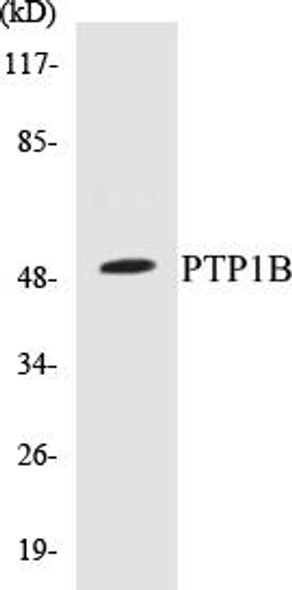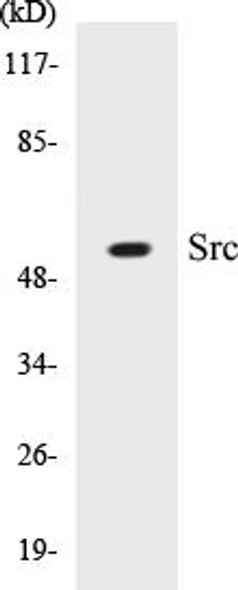Description
FAS Colorimetric Cell-Based ELISA Kit
The FAS Colorimetric Cell-Based ELISA Kit is a versatile assay designed for the accurate detection of Fas receptor levels in cell-based assays. This kit offers high sensitivity and specificity, ensuring precise and reproducible results for a variety of research applications.The Fas receptor, also known as CD95, plays a critical role in apoptosis and immune response regulation. Dysregulation of the Fas pathway has been implicated in various diseases, including cancer and autoimmune disorders. By measuring Fas receptor levels in cell cultures, researchers can gain valuable insights into apoptotic mechanisms and potential therapeutic targets.
Whether studying cell death pathways, investigating immune responses, or developing novel treatments, the FAS Colorimetric Cell-Based ELISA Kit provides researchers with a powerful tool for in vitro analysis. Trust in the reliability and accuracy of this kit to support your research efforts and further understand the role of Fas signaling in health and disease.
| Product Name: | FAS Colorimetric Cell-Based ELISA Kit |
| Product Code: | CBCAB00653 |
| ELISA Type: | Cell-Based |
| Target: | FAS |
| Reactivity: | Human |
| Dynamic Range: | > 5000 Cells |
| Detection Method: | Colorimetric 450 nmStorage/Stability:4°C/6 Months |
| Format: | 96-Well Microplate |
The FAS Colorimetric Cell-Based ELISA Kit is a convenient, lysate-free, high throughput and sensitive assay kit that can detect FAS protein expression profile in cells. The kit can be used for measuring the relative amounts of FAS in cultured cells as well as screening for the effects that various treatments, inhibitors (ie siRNA or chemicals), or activators have on FAS.
Qualitative determination of FAS concentration is achieved by an indirect ELISA format. In essence, FAS is captured by FAS-specific primary antibodies while the HRP-conjugated secondary antibodies bind the Fc region of the primary antibody. Through this binding, the HRP enzyme conjugated to the secondary antibody can catalyze a colorimetric reaction upon substrate addition. Due to the qualitative nature of the Cell-Based ELISA, multiple normalization methods are needed:
| 1. | A monoclonal antibody specific for human GAPDH is included to serve as an internal positive control in normalizing the target absorbance values. |
| 2. | Following the colorimetric measurement of HRP activity via substrate addition, the Crystal Violet whole-cell staining method may be used to determine cell density. After staining, the results can be analysed by normalizing the absorbance values to cell amounts, by which the plating difference can be adjusted. |
| Database Information: | Gene ID: 355, UniProt ID: P25445, OMIM: 134637/601859, Unigene: Hs.244139 |
| Gene Symbol: | FAS |
| Sub Type: | None |
| UniProt Protein Function: | FAS: Receptor for TNFSF6/FASLG. The adapter molecule FADD recruits caspase-8 to the activated receptor. The resulting death- inducing signaling complex (DISC) performs caspase-8 proteolytic activation which initiates the subsequent cascade of caspases (aspartate-specific cysteine proteases) mediating apoptosis. FAS- mediated apoptosis may have a role in the induction of peripheral tolerance, in the antigen-stimulated suicide of mature T-cells, or both. The secreted isoforms 2 to 6 block apoptosis (in vitro). Binds DAXX. Interacts with HIPK3. Part of a complex containing HIPK3 and FADD. Binds RIPK1 and FAIM2. Interacts with BRE and FEM1B. Interacts with FADD. Isoform 1 and isoform 6 are expressed at equal levels in resting peripheral blood mononuclear cells. After activation there is an increase in isoform 1 and decrease in the levels of isoform 6. 6 isoforms of the human protein are produced by alternative splicing. |
| UniProt Protein Details: | Protein type:Apoptosis; Membrane protein, integral; Receptor, cytokine; Cell surface Chromosomal Location of Human Ortholog: 10q24.1 Cellular Component: cell surface; cytoplasm; plasma membrane; integral to membrane; CD95 death-inducing signaling complex; nucleus; cytosol; lipid raft; external side of plasma membrane Molecular Function:identical protein binding; protein binding; signal transducer activity; transmembrane receptor activity; receptor activity; kinase binding Biological Process: circadian rhythm; caspase activation; spleen development; regulation of myeloid cell differentiation; renal system process; transformed cell apoptosis; apoptosis; positive regulation of apoptosis; positive regulation of protein homooligomerization; regulation of lymphocyte differentiation; response to toxin; response to glucocorticoid stimulus; negative regulation of B cell activation; signal transduction; negative thymic T cell selection; regulation of apoptosis; inflammatory cell apoptosis; B cell mediated immunity; induction of apoptosis via death domain receptors; gene expression; protein complex assembly; immunoglobulin production; activated T cell apoptosis; protein homooligomerization; negative regulation of apoptosis Disease: Autoimmune Lymphoproliferative Syndrome |
| NCBI Summary: | The protein encoded by this gene is a member of the TNF-receptor superfamily. This receptor contains a death domain. It has been shown to play a central role in the physiological regulation of programmed cell death, and has been implicated in the pathogenesis of various malignancies and diseases of the immune system. The interaction of this receptor with its ligand allows the formation of a death-inducing signaling complex that includes Fas-associated death domain protein (FADD), caspase 8, and caspase 10. The autoproteolytic processing of the caspases in the complex triggers a downstream caspase cascade, and leads to apoptosis. This receptor has been also shown to activate NF-kappaB, MAPK3/ERK1, and MAPK8/JNK, and is found to be involved in transducing the proliferating signals in normal diploid fibroblast and T cells. Several alternatively spliced transcript variants have been described, some of which are candidates for nonsense-mediated mRNA decay (NMD). The isoforms lacking the transmembrane domain may negatively regulate the apoptosis mediated by the full length isoform. [provided by RefSeq, Mar 2011] |
| UniProt Code: | P25445 |
| NCBI GenInfo Identifier: | 119833 |
| NCBI Gene ID: | 355 |
| NCBI Accession: | P25445.1 |
| UniProt Secondary Accession: | P25445,Q14292, Q14293, Q14294, Q14295, Q16652, Q5T9P1 Q5T9P2, Q5T9P3, Q6SSE9, A9UJX4, B6VNV4, |
| UniProt Related Accession: | P25445 |
| Molecular Weight: | 37,732 Da |
| NCBI Full Name: | Tumor necrosis factor receptor superfamily member 6 |
| NCBI Synonym Full Names: | Fas cell surface death receptor |
| NCBI Official Symbol: | FAS |
| NCBI Official Synonym Symbols: | APT1; CD95; FAS1; APO-1; FASTM; ALPS1A; TNFRSF6 |
| NCBI Protein Information: | tumor necrosis factor receptor superfamily member 6; Fas AMA; FAS 827dupA; CD95 antigen; FASLG receptor; apoptosis antigen 1; Delta Fas/APO-1/CD95; FAS receptor variant 9; APO-1 cell surface antigen; TNF receptor superfamily member 6; apoptosis-mediating surface antigen FAS; Fas (TNF receptor superfamily, member 6); tumor necrosis factor receptor superfamily, member 6 |
| UniProt Protein Name: | Tumor necrosis factor receptor superfamily member 6 |
| UniProt Synonym Protein Names: | Apo-1 antigen; Apoptosis-mediating surface antigen FAS; FASLG receptor |
| Protein Family: | Development-specific protein |
| UniProt Gene Name: | FAS |
| UniProt Entry Name: | TNR6_HUMAN |
| Component | Quantity |
| 96-Well Cell Culture Clear-Bottom Microplate | 2 plates |
| 10X TBS | 24 mL |
| Quenching Buffer | 24 mL |
| Blocking Buffer | 50 mL |
| 15X Wash Buffer | 50 mL |
| Primary Antibody Diluent | 12 mL |
| 100x Anti-Phospho Target Antibody | 60 µL |
| 100x Anti-Target Antibody | 60 µL |
| Anti-GAPDH Antibody | 60 µL |
| HRP-Conjugated Anti-Rabbit IgG Antibody | 12 mL |
| HRP-Conjugated Anti-Mouse IgG Antibody | 12 mL |
| SDS Solution | 12 mL |
| Stop Solution | 24 mL |
| Ready-to-Use Substrate | 12 mL |
| Crystal Violet Solution | 12 mL |
| Adhesive Plate Seals | 2 seals |
The following materials and/or equipment are NOT provided in this kit but are necessary to successfully conduct the experiment:
- Microplate reader able to measure absorbance at 450 nm and/or 595 nm for Crystal Violet Cell Staining (Optional)
- Micropipettes with capability of measuring volumes ranging from 1 µL to 1 ml
- 37% formaldehyde (Sigma Cat# F-8775) or formaldehyde from other sources
- Squirt bottle, manifold dispenser, multichannel pipette reservoir or automated microplate washer
- Graph paper or computer software capable of generating or displaying logarithmic functions
- Absorbent papers or vacuum aspirator
- Test tubes or microfuge tubes capable of storing ≥1 ml
- Poly-L-Lysine (Sigma Cat# P4832 for suspension cells)
- Orbital shaker (optional)
- Deionized or sterile water
*Note: Protocols are specific to each batch/lot. For the correct instructions please follow the protocol included in your kit.
| Step | Procedure |
| 1. | Seed 200 µL of 20,000 adherent cells in culture medium in each well of a 96-well plate. The plates included in the kit are sterile and treated for cell culture. For suspension cells and loosely attached cells, coat the plates with 100 µL of 10 µg/ml Poly-L-Lysine (not included) to each well of a 96-well plate for 30 minutes at 37°C prior to adding cells. |
| 2. | Incubate the cells for overnight at 37°C, 5% CO2. |
| 3. | Treat the cells as desired. |
| 4. | Remove the cell culture medium and rinse with 200 µL of 1x TBS, twice. |
| 5. | Fix the cells by incubating with 100 µL of Fixing Solution for 20 minutes at room temperature. The 4% formaldehyde is used for adherent cells and 8% formaldehyde is used for suspension cells and loosely attached cells. |
| 6. | Remove the Fixing Solution and wash the plate 3 times with 200 µL 1x Wash Buffer for five minutes each time with gentle shaking on the orbital shaker. The plate can be stored at 4°C for a week. |
| 7. | Add 100 µL of Quenching Buffer and incubate for 20 minutes at room temperature. |
| 8. | Wash the plate 3 times with 1x Wash Buffer for 5 minutes each time. |
| 9. | Add 200 µL of Blocking Buffer and incubate for 1 hour at room temperature. |
| 10. | Wash 3 times with 200 µL of 1x Wash Buffer for 5 minutes each time. |
| 11. | Add 50 µL of 1x primary antibodies (Anti-FAS Antibody and/or Anti-GAPDH Antibody) to the corresponding wells, cover with Parafilm and incubate for 16 hours (overnight) at 4°C. If the target expression is known to be high, incubate for 2 hours at room temperature. |
| 12. | Wash 3 times with 200 µL of 1x Wash Buffer for 5 minutes each time. |
| 13. | Add 50 µL of 1x secondary antibodies (HRP-Conjugated AntiRabbit IgG Antibody or HRP-Conjugated Anti-Mouse IgG Antibody) to corresponding wells and incubate for 1.5 hours at room temperature. |
| 14. | Wash 3 times with 200 µL of 1x Wash Buffer for 5 minutes each time. |
| 15. | Add 50 µL of Ready-to-Use Substrate to each well and incubate for 30 minutes at room temperature in the dark. |
| 16. | Add 50 µL of Stop Solution to each well and read OD at 450 nm immediately using the microplate reader. |
(Additional Crystal Violet staining may be performed if desired – details of this may be found in the kit technical manual.)






